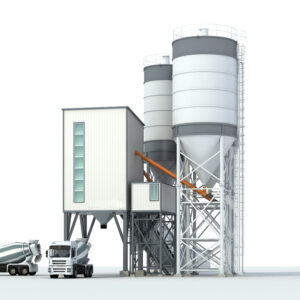Project Report For Batching Plant
Introduction
Project report for Batching Plant is as follows.
Batching is a versatile, long-lasting, ecologically friendly, and reasonably priced material that is also a worldwide renowned building material.
To generate higher-quality concrete, the components of concrete must be calculated accurately and thoroughly, which is accomplished via the use of an exact technique of concrete batching.
Water, aggregate (rock, sand, or gravel), and cement are the three main components of concrete. When combined with water and aggregates, cement, often in powder form, serves as a binding agent and hardens the water into the durable substance with which we are all accustomed.
Project Report Sample On
Batching Plant
Get Completely Custom Bankable Project Report
Batching of Concrete is a term that refers to the process of calculating and combining the needed concrete materials by weight or volume in accordance with the mix design and then transplanting them into the mix to achieve a consistent quality of concrete.
Concrete is typically batching by volume. Precision is critical while batching. It is preferable to use weight batching rather than volume batching.
Prior to preparing a concrete mixture, the concrete materials must be correctly and precisely batched or proportioned to ensure the concrete’s great quality.
Additionally, advancements in the technology necessary for the manufacture of concrete aggregates have resulted in an improvement in manufacturing efficiency, resulting in higher productivity and high-quality concrete.

The reasons stated above are projected to increase demand for concrete batching plants in the near future, which will drive the concrete batching plant market development.
On the other hand, the economic recession has had an effect on recent developments in the market for batching facilities. Due to the fact that several large-scale infrastructure projects have been delayed or stopped over the last year, manufacturers have shifted their emphasis to medium and small-scale projects.
Among the primary constraints highlighted in the global concrete batching plant market are fluctuating costs of batching plant components and fluctuating energy prices.
The global concrete batching plant market’s significant trends include the increased use of batching plants by commercial concrete producing facilities. Additionally, ecological indicators have grown increasingly stringent, including dirt disposal and residue concrete recycling.
Market Potential Of Batching Plant
A concrete batching plant, more frequently referred to as a concrete plant, is a device that mixes the elements necessary to make concrete, which includes sand, water, aggregates (gravel, rocks, etc. ), cement, and silica fume. In general, there are two primary kinds of concrete plants on the market: dry mix and wet mix.
A concrete batching plant is made up of several accessories and components, including mixers, aggregate batchers, cement batchers, conveyors, construction aggregate, chillers, cement bins, and dust collectors.
Concrete batching facilities come in a variety of configurations, including fixed, portable, and semi-portable. Portable concrete batching units need minimal installation area and are easily transported to various building locations, such as housing complexes or multifunctional dams. Concrete batching plants have grown ubiquitous in nations the world over.
Increased infrastructure expenditure in emerging nations throughout the Asia Pacific, Europe, and North America is a major driver driving the concrete batching plant market’s rise.
The market is growing primarily as a result of the development of large-scale infrastructure projects in the Asia Pacific and other areas as a result of economic recovery. Additionally, governments of major economies are concentrating their efforts on the expansion of transportation infrastructure and the fortification of energy infrastructure.
